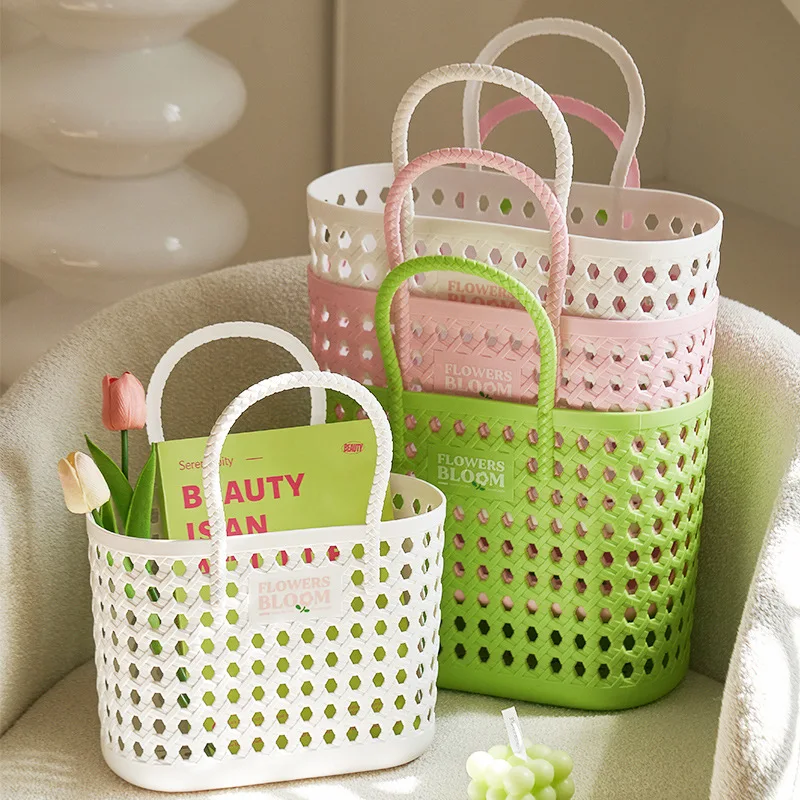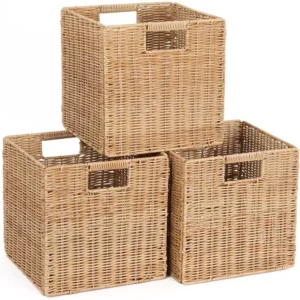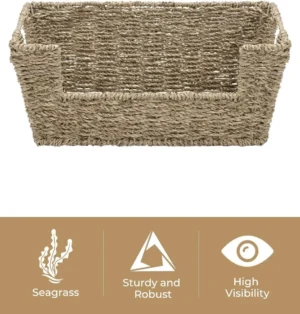Wicker baskets have long been cherished for their rustic charm and versatility in home organization and décor. Crafted from natural materials like rattan, willow, bamboo, or seagrass, these woven containers add warmth and texture to any space. While their aesthetic appeal is undeniable, wicker baskets come with several practical limitations that deserve consideration before incorporating them into your home organization system.
Whether you’re considering a wicker basket for laundry, storage, or display purposes, understanding the potential drawbacks can save you from disappointment and help you make an informed decision. From moisture susceptibility and durability issues to cleaning challenges and allergen concerns, wicker baskets have inherent weaknesses that might make them unsuitable for certain applications or environments.
This comprehensive guide explores the disadvantages of wicker baskets to help you determine when they’re the right choice and when you might need to consider alternatives. Proper organizing laundry wicker baskets techniques can help mitigate some issues, but being aware of all potential drawbacks ensures you’ll make the best choice for your specific needs.
Susceptibility to Moisture and Humidity Damage
One of the most significant disadvantages of wicker baskets lies in their natural materials’ vulnerability to moisture. Natural wicker fibers are highly porous, readily absorbing water from their surroundings. This inherent characteristic makes them particularly susceptible to damage in humid environments.
When exposed to moisture, wicker baskets can experience:
- Mold and mildew growth within the fibers
- Structural weakening as fibers soften and lose integrity
- Discoloration and staining that becomes permanent
- Development of musty odors that are difficult to eliminate
Environments with humidity levels above 60-70% create particularly problematic conditions for wicker. This makes them poorly suited for bathrooms, laundry rooms, basements, or outdoor spaces where moisture levels fluctuate. Even in kitchens, the steam and humidity from cooking can gradually deteriorate wicker quality.
The question of are wicker baskets good laundry storage options becomes complicated due to this moisture vulnerability. While they look attractive, their exposure to damp clothes or humid conditions in laundry areas can significantly shorten their lifespan and lead to mold issues.
When considering wicker baskets for your organization needs, it’s crucial to evaluate the typical humidity levels in your intended placement area. Proper how clean wicker baskets techniques can help manage moisture issues but cannot fully prevent them in problematic environments.
For areas with higher humidity, exploring wicker laundry baskets lids can provide some protection against moisture exposure, though this solution isn’t completely moisture-proof.
Durability Concerns and Structural Weaknesses
Wicker baskets, while visually appealing, have inherent structural vulnerabilities that affect their longevity and performance under stress. The interwoven pattern that gives wicker its distinctive appearance also creates multiple potential failure points.
Handle Fragility
The handles of wicker baskets are typically their weakest structural element. When loaded with heavier items like books or damp towels, handles can weaken, crack, or detach completely from the main basket structure. This is especially problematic for laundry baskets that require frequent lifting and transport.
Rim and Edge Deterioration
The upper rim and edges of wicker baskets often show the first signs of wear. These areas experience the most handling and contact, leading to loosened weaves, splayed fibers, and eventual unraveling. Once this process begins, it typically accelerates over time.
Bottom Support Limitations
Weight-bearing capacity represents a significant limitation of wicker construction. The bottom weave can begin to sag under moderate loads, eventually leading to complete failure. Unlike plastic or metal alternatives that maintain their shape under pressure, wicker gradually deforms with continued use.
Compared to other storage materials, wicker generally has a shorter functional lifespan. While quality plastic containers might last decades without significant degradation, wicker baskets typically show noticeable wear within 2-5 years of regular use, depending on conditions and quality.
Our rattan baskets collection offers varying construction techniques that address some durability concerns, but the natural limitations of woven materials remain an inherent disadvantage.
Cleaning Challenges and Maintenance Requirements
The intricate weave pattern that gives wicker its distinctive appearance also creates significant cleaning and maintenance challenges. Unlike smooth-surfaced containers that can be quickly wiped clean, wicker requires specialized attention and often more time-intensive care.
Specific cleaning difficulties include:
- Countless tiny crevices that trap dust, crumbs, and debris
- Inability to thoroughly wash with water without risking damage
- Difficulty reaching deep into the weave pattern with cleaning tools
- Tendency for spills to penetrate deeply into fibers
- Need for specialized brushes and cleaning techniques
Maintaining wicker baskets properly requires regular dusting with soft brushes, occasional gentle vacuuming with appropriate attachments, and spot cleaning with minimal moisture. For baskets with significant soil, specialized cleaning products designed for natural fibers may be necessary, adding to the overall maintenance cost.
Furthermore, wicker baskets often benefit from periodic treatments with protective oils or sprays to prevent the fibers from drying out and becoming brittle. This represents an ongoing maintenance commitment not required by plastic, metal, or fabric alternatives.
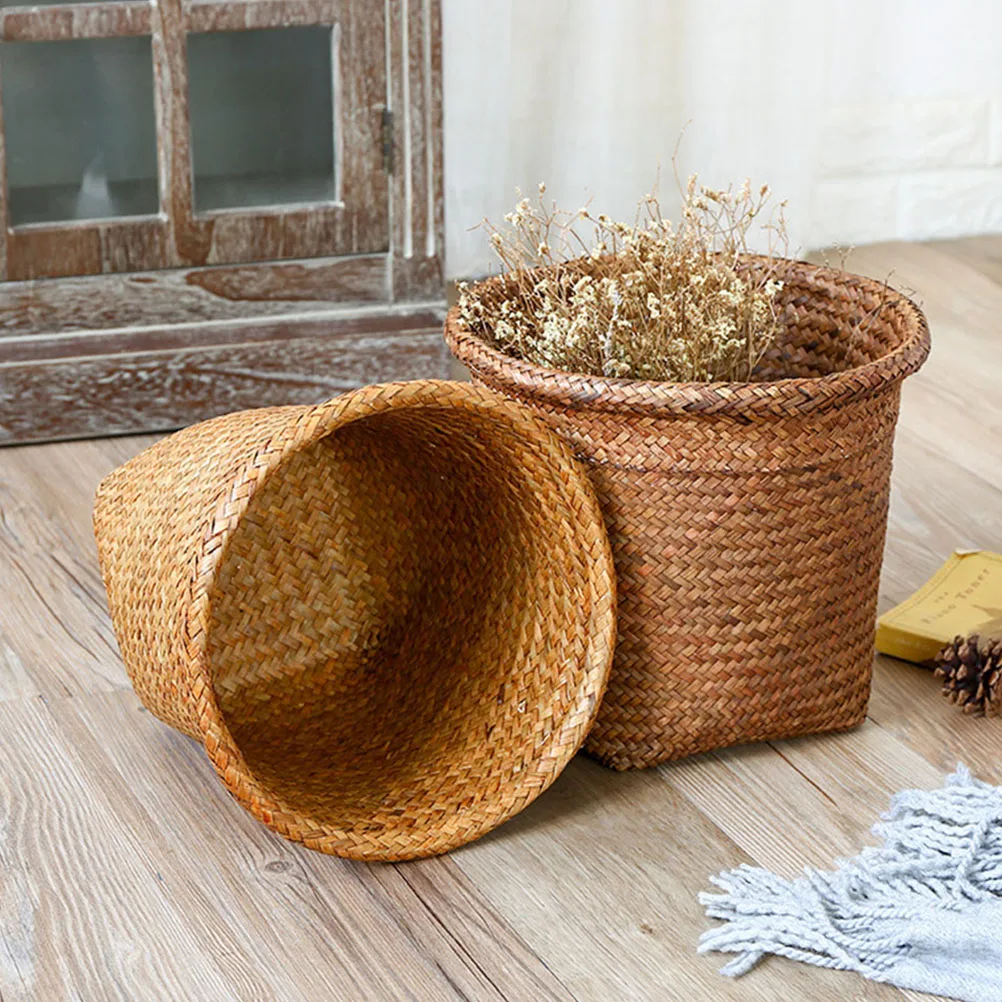
Understanding the dos and donts wicker basket care can help extend their lifespan, but the cleaning requirements remain more demanding than most alternative storage options. When considering wicker storage baskets for your organization needs, factor in this additional maintenance time as part of your decision.
Allergen and Dust Collection Problems
Wicker baskets present particular challenges for individuals with allergies or respiratory sensitivities due to their exceptional ability to harbor allergens. The same intricate weave that creates visual appeal also forms an elaborate network of dust-collecting spaces that are difficult to clean thoroughly.
Natural wicker creates ideal conditions for allergen accumulation in several ways:
- The rough, textured surface of wicker fibers easily traps and holds dust particles
- Deep crevices between weaves become reservoirs for pollen, pet dander, and other common allergens
- Moisture-susceptible fibers can harbor dust mites that thrive in slightly damp conditions
- Mold spores can become embedded in the material, especially in humid environments
Even with regular surface cleaning, allergens can become deeply embedded within the wicker structure. Standard cleaning methods often disturb surface allergens without removing them, potentially releasing them into the air and exacerbating allergy symptoms.
For households with allergy sufferers, wicker laundry baskets and other wicker storage items may require more frequent and thorough cleaning than alternative materials. In some cases, wicker may need to be avoided entirely in favor of smooth-surfaced, non-porous storage options that don’t trap allergens.
Odor Absorption and Retention Issues
Natural wicker fibers possess a remarkable ability to absorb and retain odors, which can become a significant drawback in many household applications. The porous structure that makes wicker vulnerable to moisture also makes it particularly susceptible to trapping smells from its environment.
Wicker baskets can absorb and retain a variety of odors, including:
- Food aromas, particularly strong-smelling foods
- Smoke from cooking, candles, or cigarettes
- Pet odors from accidents or proximity to pet areas
- Musty smells from mold or mildew development
- Chemical odors from cleaning products or home renovations
Once these smells penetrate the wicker fibers, they can be extraordinarily difficult to eliminate completely. Surface cleaning may temporarily mask the odor, but it often returns as the masking agent dissipates. This characteristic makes wicker particularly problematic for certain applications like kitchen storage or pet supply organization.
Traditional air fresheners and fabric sprays typically provide only temporary relief, as they don’t address the deeply embedded odors within the fibers. More aggressive deodorizing methods, such as sunning or using baking soda treatments, provide better results but require regular reapplication.
While wicker baskets elegant laundry solution articles often highlight their aesthetic benefits, they rarely address this significant functional drawback of odor retention, which can be particularly problematic when storing soiled clothing.
Functional Limitations for Storage Purposes
While aesthetically pleasing, wicker baskets present several practical limitations that restrict their usefulness for various storage applications. Understanding these functional constraints helps determine whether wicker is the right choice for your specific organization needs.
Key functional limitations include:
- Gaps in the weave allow small items to slip through or become trapped between fibers
- Rough interior surfaces can snag delicate fabrics like silk or knitwear
- Unsuitable for food storage without proper liners due to cleaning difficulties and potential contamination
- Poor containment for liquid-containing items that might leak or spill
- Limited stability when stacked, creating potential safety hazards
- Irregular shapes that don’t maximize storage space efficiency compared to rectangular containers
These limitations mean wicker baskets aren’t ideal for storing items like jewelry, small office supplies, certain clothing types, or bathroom toiletries that might leak. Understanding what can store wicker basket options work best helps avoid disappointment and damage to both the basket and its contents.
For many applications, wicker baskets require additional accessories like fabric liners or plastic inserts to overcome their inherent limitations. This adds to both the cost and complexity of using wicker for organization purposes.
Black Wicker Baskets, Rattan Storage Baskets, Tall Wicker Baskets, Wicker Shelf Baskets, Woven Storage Baskets
5-Tier Distressed Black Wood Frame Storage Tower with Removable Wicker Baskets for Home Organization$715.80 Select options This product has multiple variants. The options may be chosen on the product pageWicker Laundry Baskets, Woven Laundry Baskets, Woven Storage Baskets
$392.02 Select options This product has multiple variants. The options may be chosen on the product pageRattan Shelf Baskets, Rattan Storage Baskets, Small Wicker Baskets, Square Wicker Baskets
Square Plastic Wicker Storage Baskets Set of 3 with Collapsible Design for Cube Storage Organization$185.47 Select options This product has multiple variants. The options may be chosen on the product pageWicker Baskets with Handles, Wicker Storage Baskets, Woven Storage Baskets
$137.92 Select options This product has multiple variants. The options may be chosen on the product pageLarge Wicker Laundry Baskets, Tall Wicker Baskets, Woven Laundry Hampers, Woven Storage Baskets
$130.54 Select options This product has multiple variants. The options may be chosen on the product pageWicker Hampers with Lids, Wicker Laundry Baskets with Lids, Wicker Laundry Hampers
$127.33 Select options This product has multiple variants. The options may be chosen on the product page
Vulnerability to Pests and Insects
The natural materials used in wicker baskets can unfortunately attract and harbor various pests and insects. This vulnerability creates both preservation challenges and potential household infestation concerns.
Common pests attracted to wicker include:
- Beetles and borers that feed on plant fibers
- Carpet beetles that consume natural materials
- Termites attracted to the cellulose in wicker
- Silverfish that thrive in the tiny crevices
- Dust mites that colonize the many hidden spaces
These pests find wicker particularly attractive because it provides both food source and shelter. The intricate weave offers countless hiding places that protect pests from detection and predators, allowing populations to grow unnoticed until significant damage occurs.
Signs of pest infestation in wicker include small holes in the material, fine powder or dust around the basket, visible insects, or unexplained deterioration of the weave. Once established, these pests can spread to other household items, particularly other natural fiber products.
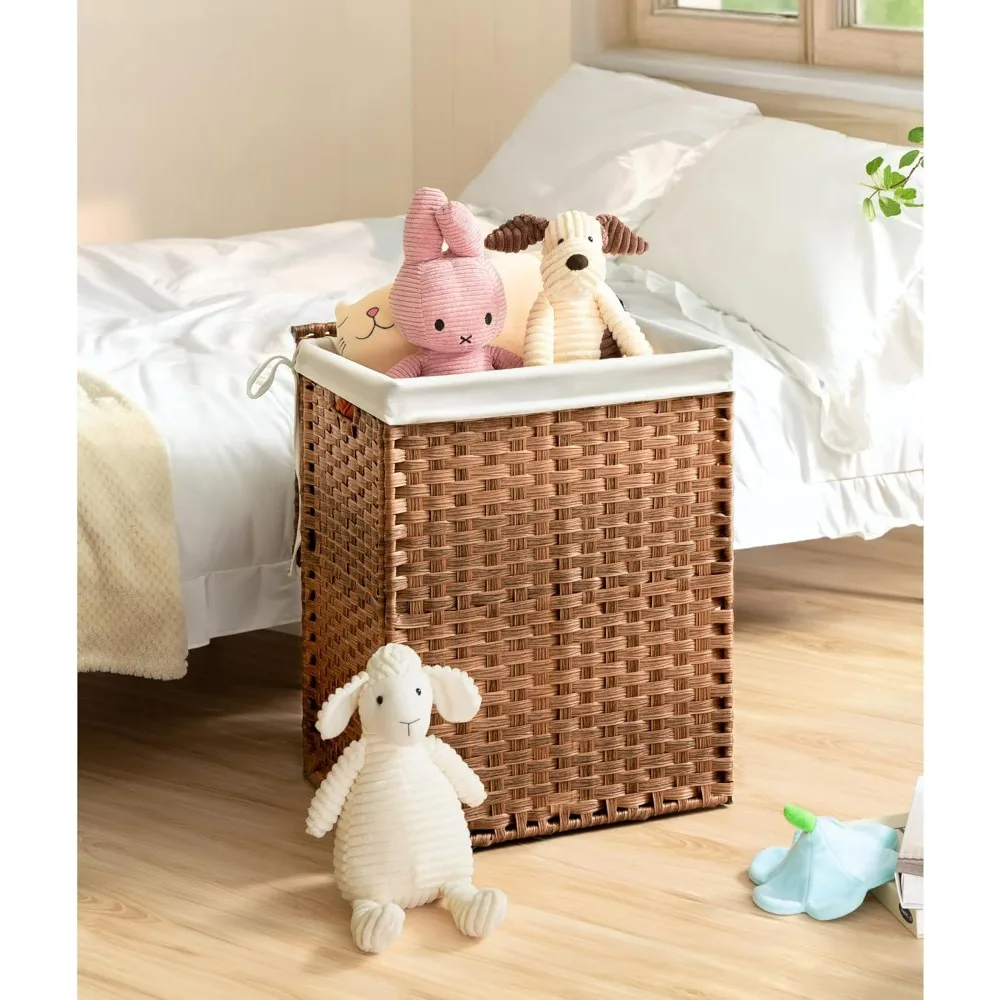
Protecting wicker from pests typically requires regular inspection, proper cleaning, and occasionally, treatment with appropriate pest deterrents. Wicker storage baskets lids offer some protection against pest infiltration, but vigilance remains necessary, especially in areas prone to insect activity.
Safety Concerns for Households
Beyond practical limitations, wicker baskets present several safety concerns that merit consideration, especially in households with children, elderly individuals, or pets.
Splinter Risks
As wicker ages or dries out, the fibers can become brittle and develop sharp edges or splinters. These can cause minor injuries during handling, particularly to sensitive skin. Regular inspection and maintenance can reduce this risk, but the natural degradation process of wicker makes splinter formation difficult to prevent entirely.
Chemical Treatments
Some commercially produced wicker baskets receive chemical treatments to enhance durability or resist pests. These treatments may include formaldehyde-based preservatives or other chemicals that could potentially cause skin irritation or contribute to indoor air quality issues, especially when new.
Stability Issues
Wicker baskets, particularly taller designs, often have a higher center of gravity compared to other storage containers. Combined with their typically lightweight construction, this makes them prone to tipping when bumped or when items are unevenly distributed inside. This tipping risk becomes more significant as handles or structural elements weaken with age.
Fire Hazard Considerations
Natural wicker is more flammable than many alternative storage materials like metal or heavy-duty plastic. While not an immediate danger in most household settings, this flammability becomes a consideration when using wicker near candles, fireplaces, or in areas with higher fire risk.
For families with specific safety concerns, exploring wicker baskets lids options may provide additional safety features, but cannot eliminate all inherent risks associated with the material.
Environmental Factors Affecting Wicker Longevity
The environment where you place your wicker baskets significantly impacts their lifespan and appearance. Various environmental conditions affect wicker in different ways, accelerating deterioration or causing specific types of damage.
| Environmental Factor | Effect on Wicker | Severity |
|---|---|---|
| Direct sunlight | Fading, drying, brittleness, fiber breakdown | High |
| High humidity (>70%) | Mold growth, warping, odor development | High |
| Temperature fluctuations | Expansion/contraction causing loose weaves | Moderate |
| Dry heat (heating vents) | Excessive drying, cracking, brittleness | Moderate to High |
| Air conditioning | Potential moisture condensation issues | Low to Moderate |
| Cooking areas | Grease accumulation, odor absorption | Moderate |
| Salt air (coastal areas) | Accelerated deterioration of fibers | Moderate |
Seasonal changes present particular challenges for wicker preservation. Winter heating systems often reduce indoor humidity to levels that dry out wicker fibers, while summer months may bring higher humidity that encourages mold growth. These fluctuations require adaptive care strategies throughout the year.
Understanding the specific environmental challenges in your home helps determine whether best wicker baskets laundry organization options will remain functional and attractive over time. In particularly challenging environments, more durable alternatives might prove more practical despite lacking wicker’s aesthetic appeal.
Strategies to Minimize Wicker Disadvantages
While wicker baskets have inherent limitations, several strategies can help extend their lifespan and functionality, allowing you to enjoy their aesthetic benefits with fewer practical drawbacks.
Strategic placement – Keep wicker baskets away from bathrooms, kitchens, and other high-humidity areas. Position them away from direct sunlight, heating vents, and areas with significant temperature fluctuations.
Protective treatments – Apply food-grade mineral oil or specialized wicker sealants every 6-12 months to prevent excessive drying and cracking. Always test treatments on an inconspicuous area first.
Use appropriate liners – Fabric or plastic liners protect the basket from spills while allowing you to store smaller items that might otherwise fall through the weave. Removable liners also simplify cleaning.
Implement regular maintenance – Develop a schedule for dusting, vacuuming with appropriate attachments, and inspecting for early signs of damage. Catching problems early significantly extends basket life.
Control environmental factors – Consider using dehumidifiers in damp areas or humidifiers in excessively dry rooms to create more stable conditions for wicker preservation.
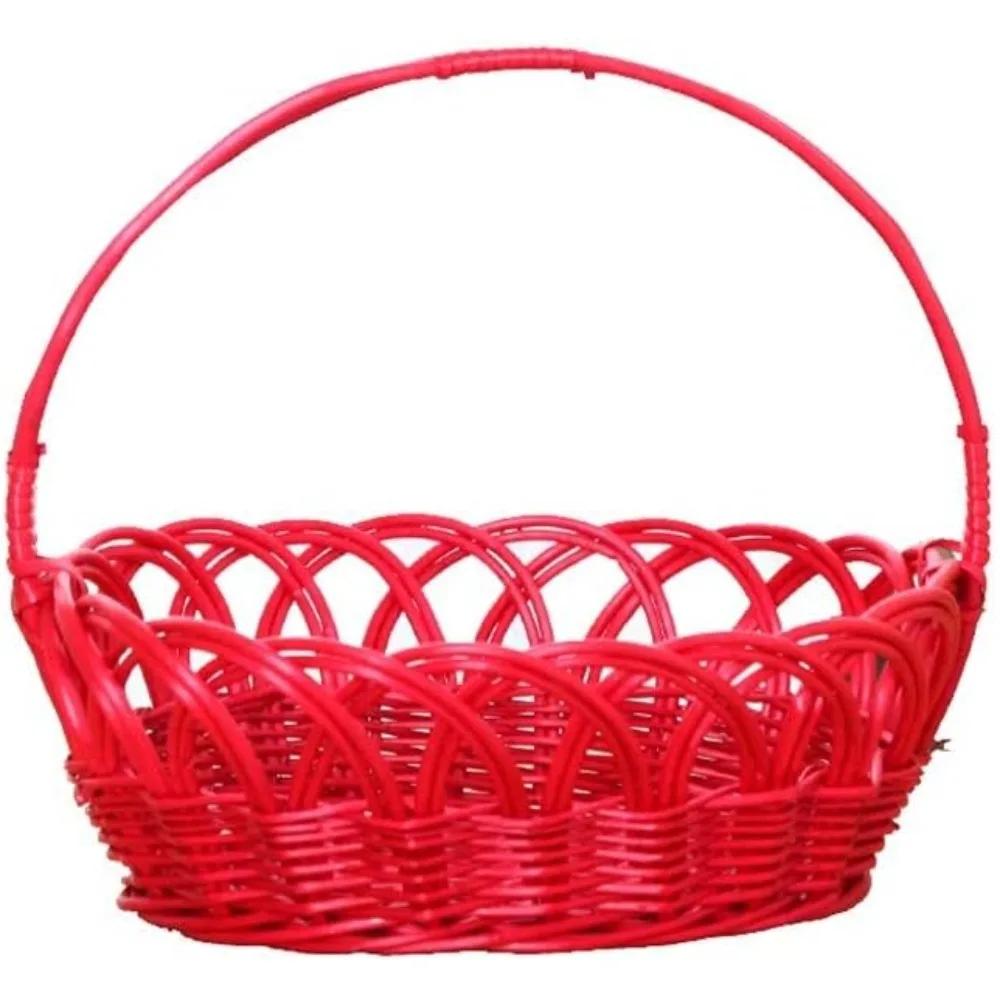
Exploring creative wicker laundry basket storage ideas can help you position these items in locations that minimize exposure to damaging factors while maximizing their decorative impact.
When to Choose Alternatives to Natural Wicker
Despite their charm, there are situations where alternatives to natural wicker make more practical sense. Recognizing these scenarios helps you make appropriate storage choices for specific needs and environments.
Natural wicker is particularly unsuitable for:
- Bathroom environments with regular high humidity
- Outdoor use without significant protection
- Storing small items without liners
- Heavy-load applications like book storage
- Areas with active children who might handle roughly
- Homes with individuals who have severe allergies
- Storage needs requiring frequent washing/sanitizing
When wicker isn’t the right choice, consider these alternatives:
- Synthetic wicker – Offers similar aesthetic with improved moisture resistance
- Metal wire baskets – Provide airflow with greater durability
- Fabric storage bins – Washable and gentle on delicate items
- Wooden crates – More structural integrity for heavier items
- Plastic containers – Maximum moisture protection and cleaning ease
Each alternative offers different benefits in terms of durability, cleaning ease, and functional performance. While they might lack the traditional charm of natural wicker, the practical advantages often outweigh the aesthetic differences in challenging applications.
For versatile options that blend aesthetics with improved functionality, our woven storage baskets collection includes alternatives that address many common wicker limitations.
Conclusion
Wicker baskets undeniably bring warmth, texture, and natural beauty to home organization. However, their susceptibility to moisture damage, structural fragility, cleaning challenges, allergen collection, and other practical limitations make them unsuitable for many applications despite their aesthetic appeal.
When considering wicker for your storage needs, carefully evaluate the specific environment where the basket will be used, the items you intend to store, and your willingness to perform the necessary maintenance. In dry, moderate climates for decorative or light storage purposes, wicker can perform adequately with proper care.
For more demanding applications—especially in humid environments, for heavy items, or where frequent cleaning is necessary—alternative materials typically offer better functionality and longevity. By understanding these inherent limitations, you can make informed decisions about when to embrace wicker’s natural charm and when to opt for more practical alternatives.

